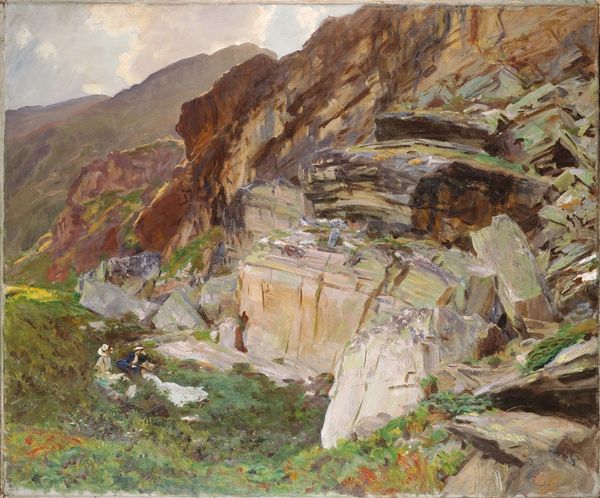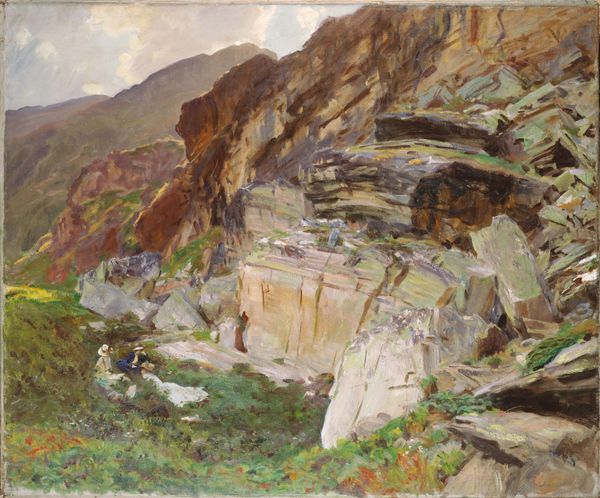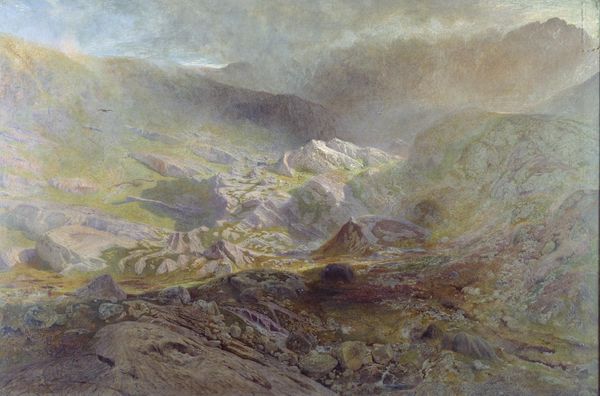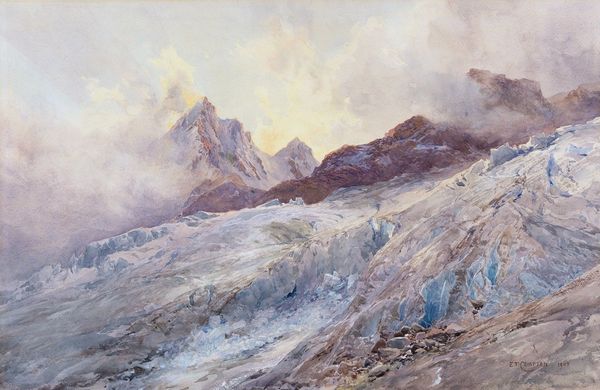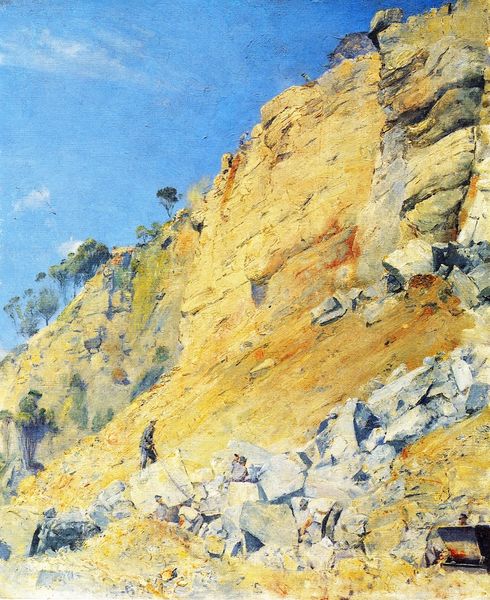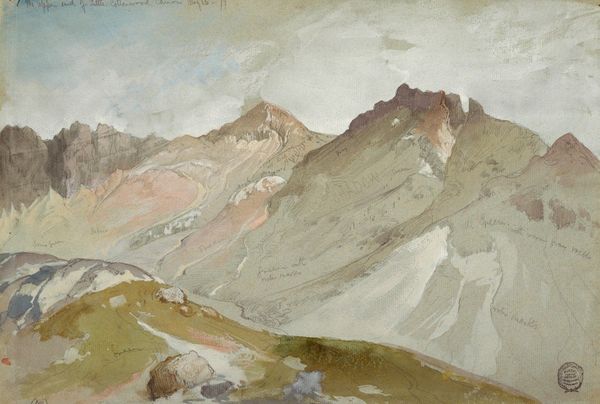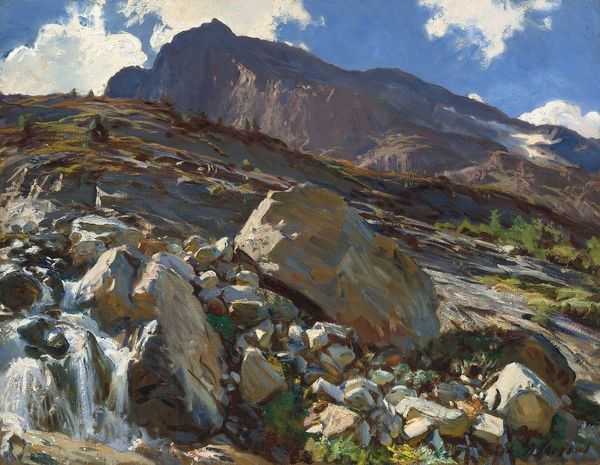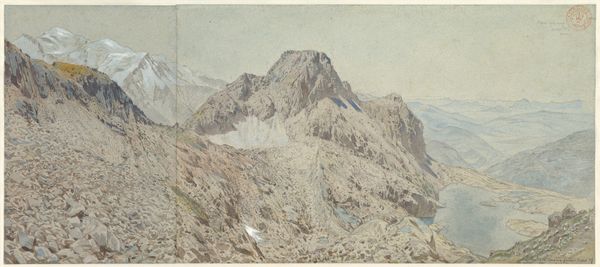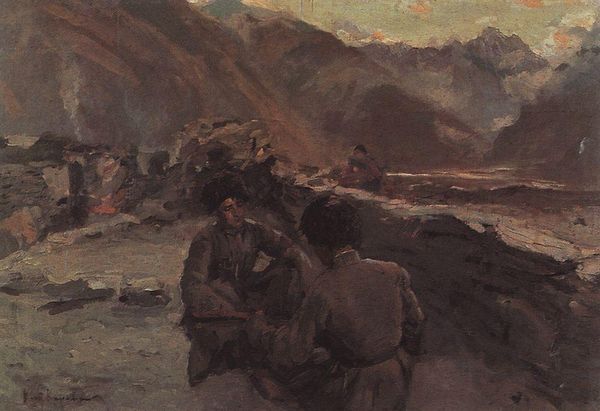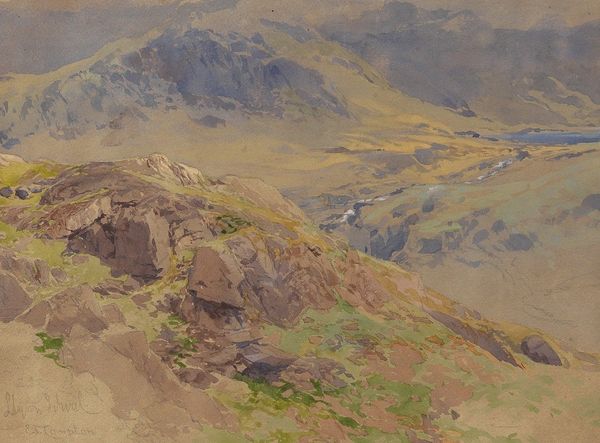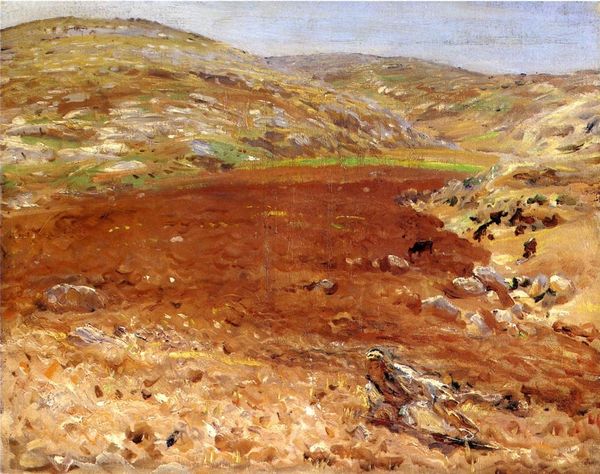
Copyright: Public Domain: Artvee
Editor: John Singer Sargent's oil painting, "Bringing Down Marble from the Quarries to Carrara," completed in 1911, is incredibly evocative. There's a real sense of the scale of the quarry and the labor involved, almost romanticising it. How do you interpret this work? Curator: It's interesting that you use the word 'romanticising'. Looking at it through a historical lens, it reflects a particular public fascination with industry and labor at the turn of the century. But whose perspective are we seeing? Editor: Good point! It's easy to get lost in the composition and forget about the actual workers depicted. What was the common perception of labourers in the early 20th century? Curator: Well, views were definitely mixed and highly political. There was a growing socialist movement focusing on workers’ rights, while others, often from more privileged backgrounds, saw the working class with a kind of picturesque, aesthetic interest. Think about photography at the time documenting urban life, poverty and industrial labor. Was it celebrating it or commenting on social inequalities? Sargent here focuses on their physical strength, but are we seeing their struggle or simply an exotic subject? Editor: That's a complex question. Perhaps it's a bit of both. I mean, by painting this, Sargent brought the realities of the quarry workers to the attention of an art-viewing public. Curator: Precisely. It entered into the cultural discourse. But to what effect? Did it trigger reform, or simply decorate wealthy patrons’ homes? Consider how this image functions within the art market. Who was it intended for? Did that shape how Sargent represented these laborers? Editor: It’s fascinating how looking at the social and historical context changes the whole picture. I thought it was just a landscape painting initially. Curator: Exactly! Art rarely exists in a vacuum. Examining its context opens up so many possibilities of interpretation.
Comments
No comments
Be the first to comment and join the conversation on the ultimate creative platform.
